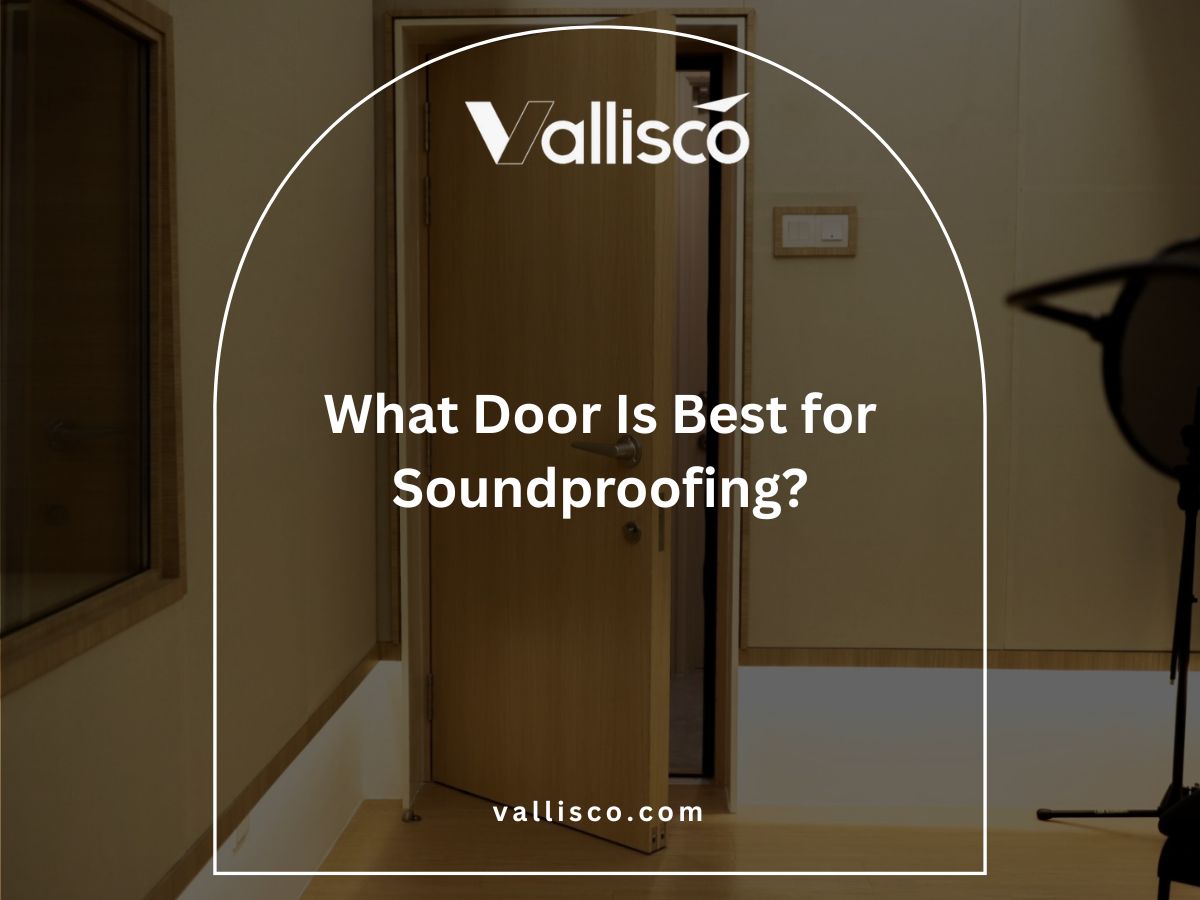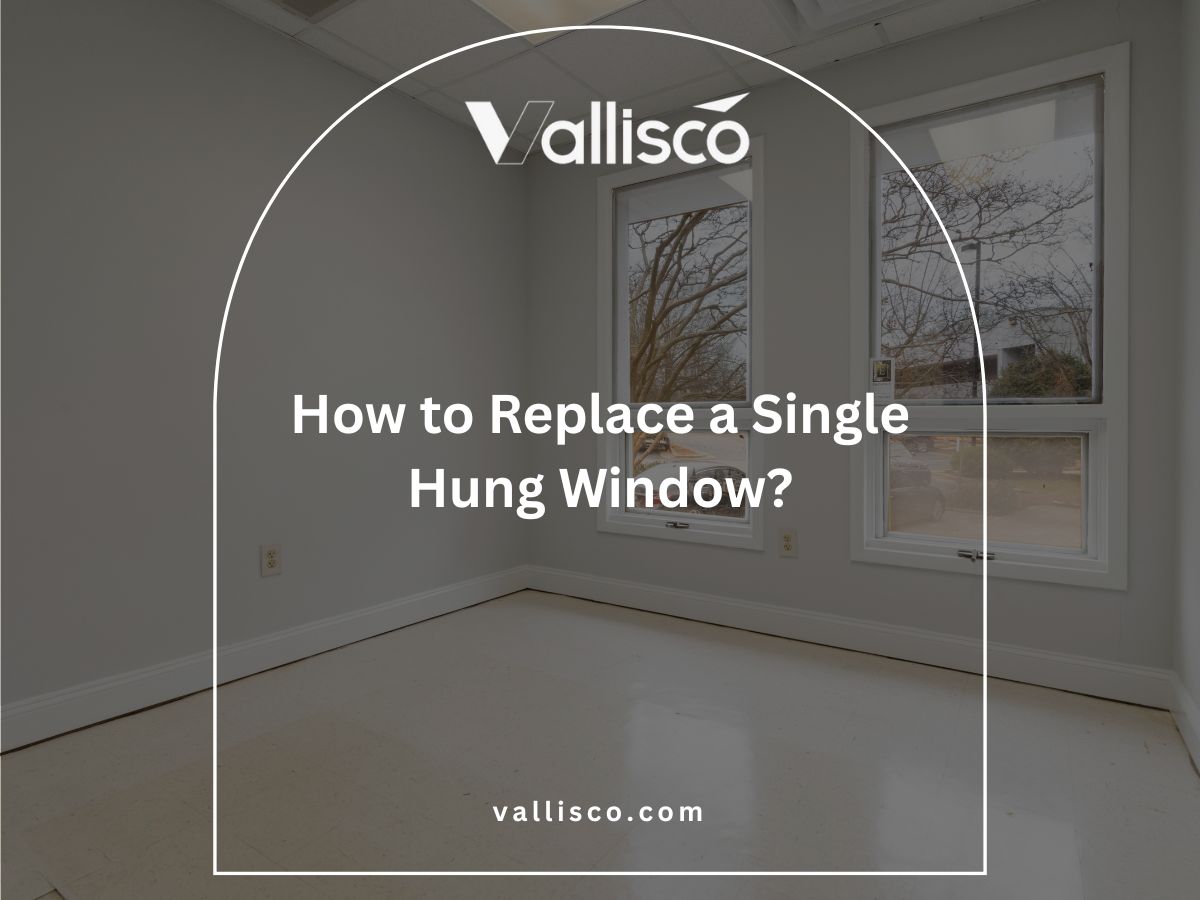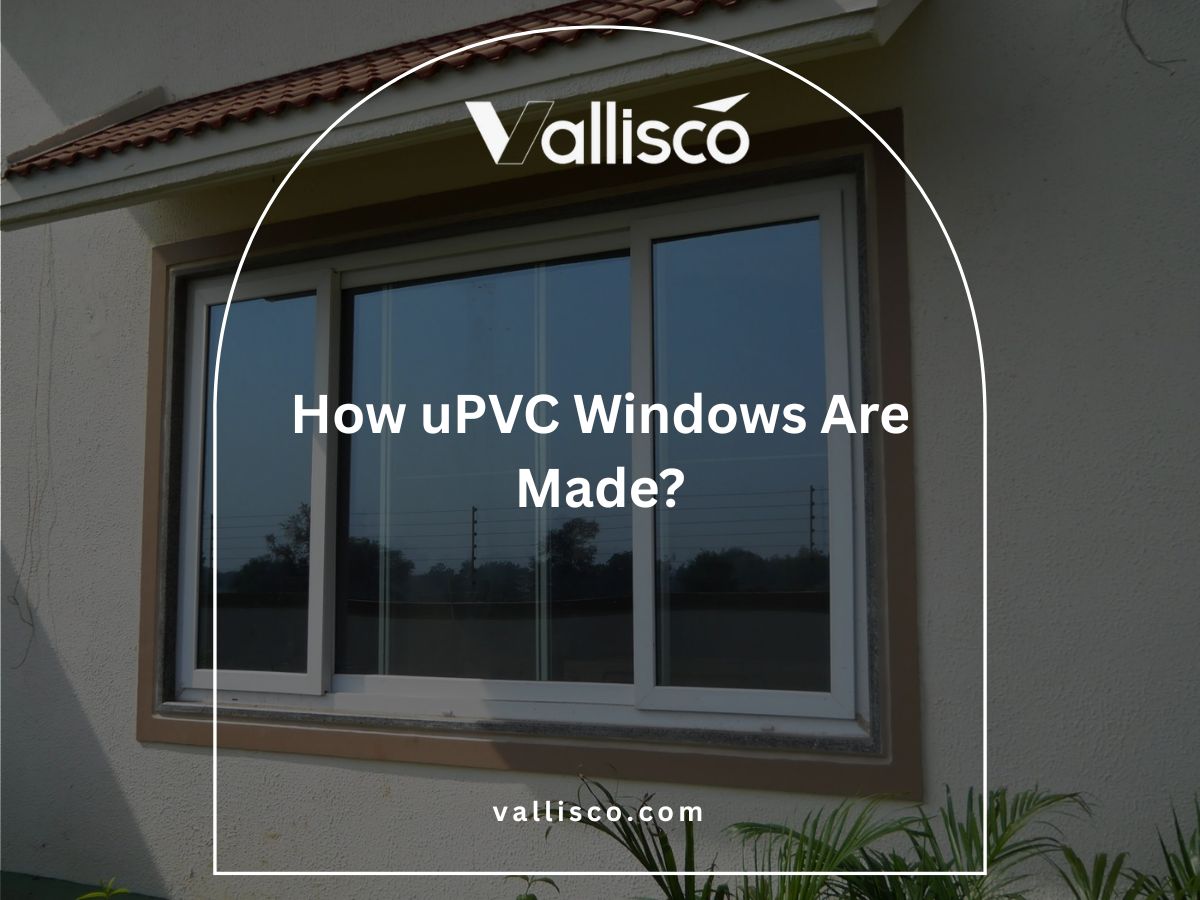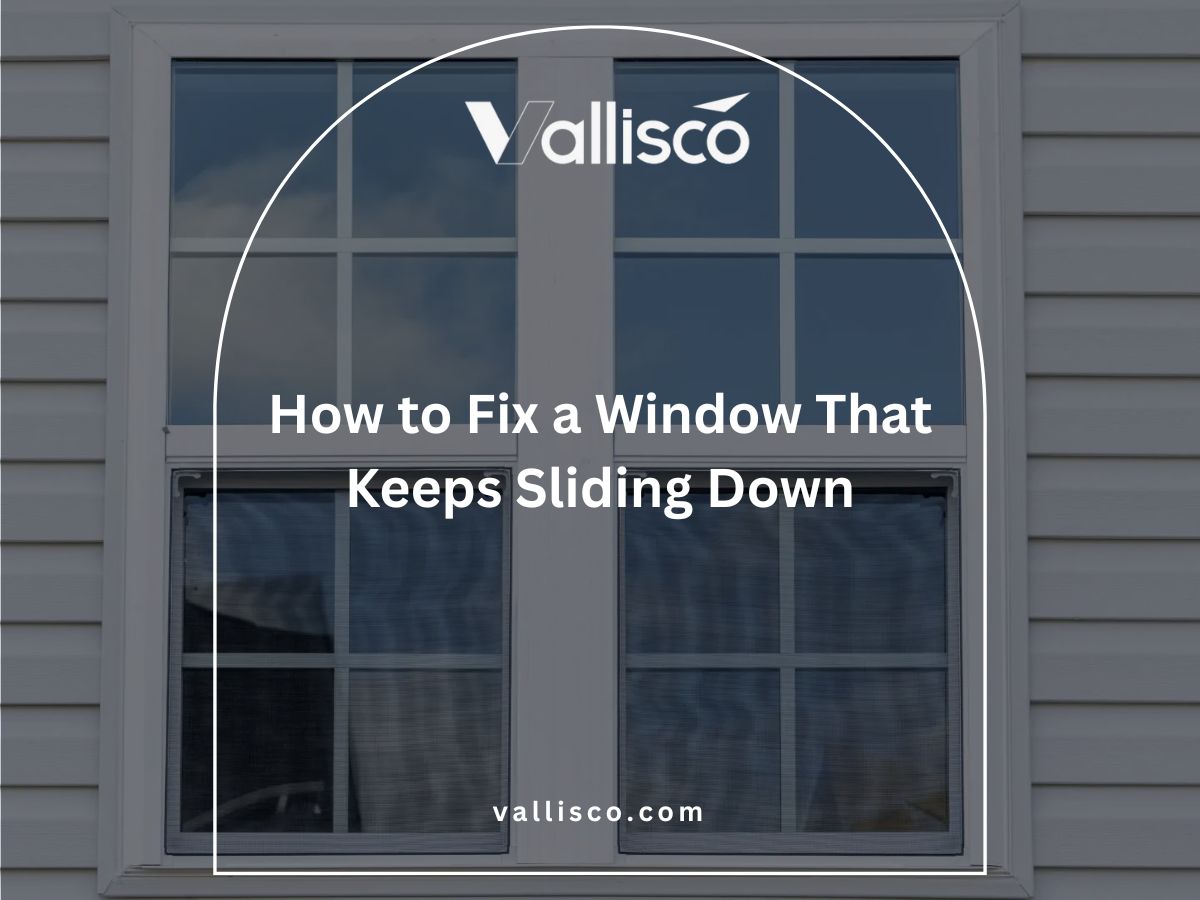Have you ever wondered why so many hotels, villas, and greenhouses still rely on swinging doors?
It isn’t just habit there are solid business reasons behind the choice. On one project, I saw how a simple switch to swinging doors reduced bottlenecks for staff and improved overall efficiency. That moment showed me how small details can change daily operations.
Since then, I’ve worked with owners and engineering teams who face the same decisions. My perspective comes from real installations and measurable outcomes, not marketing claims.
In this article, I’ll break down 12 benefits of commercial swinging doors. Each point ties directly to business needs like traffic flow, cost control, energy use, and design flexibility.
If your next project depends on doors that keep operations running smoothly, this guide will help you decide with confidence.
Let’s start!
Quick Overview
Let’s start with an overview. This table gives you a side-by-side look at the benefits of commercial swinging doors before we dive deeper into the details.
| Benefit | Key Advantage | Best For |
| Smooth Two-Way Access | Faster movement in both directions | Hotels, restaurants, greenhouses |
| Hands-Free Operation | Push-to-open without handles | Kitchens, B&Bs, public areas |
| Improved Traffic Flow | Prevents bottlenecks in busy spots | Busy service areas, lobbies, greenhouses |
| Durability in High-Use Areas | Heavy-duty hinges and materials | High-traffic hotels, villas, commercial |
| Simple Maintenance & Cleaning | Fewer parts and easy surfaces | Hospitality, greenhouses, B&Bs |
| Noise Control Between Rooms | Separates guest and work areas | Hotels, villas, shared residential spaces |
| Better Temperature Control | Limits heating and cooling loss | Hotels, villas, climate-sensitive spaces |
| ADA Accessibility Compliance | Wheelchair-friendly and inclusive | Hotels, villas, B&Bs, public facilities |
| Flexible Design Options | Wood, glass, aluminum, steel choices | Hotels with modern look, villas with charm |
| Privacy Between Areas | Discreet separation for operations | Hotels, restaurants, villas with staff |
| Cost-Effective vs Automatic | Lower price and upkeep | Any property managing budgets |
| Easy Retrofit for Existing Frames | Fits current openings without rebuilds | Renovations in hotels, villas, B&Bs |
The table gives you the surface view.
Now, let’s unpack each benefit so you can feel confident in your decision-making.
1. Smooth Two-Way Access
Swinging doors open in both directions, inward and outward. It may look like a small feature, but once you see it in action, it changes how space feels. In many projects, including those supplied by Vallisco, two-way access has taken pressure off staff and kept daily operations running without constant stops and delays. That kind of flow matters more than most people realize.
Key advantages include:
- Hands-Free Movement: Your team can push doors open with a shoulder, hip, or cart. This saves time and keeps them focused on service instead of struggling with doors.
- Guest Comfort: Visitors carrying belongings pass through smoothly. That ease creates a more professional impression and supports a better guest experience.
- Operational Efficiency: Cleaners and service teams move quickly from one area to another. The flow of work improves without adding stress to staff.
Ideal for Shared Spaces
- Villas and Homes: Staff and residents transition easily between kitchens, patios, and service areas. Work feels smoother and less interrupted.
- Greenhouses: Workers carrying trays of plants or equipment move freely through doors. The steady flow helps maintain productivity and saves effort.
- Multi-Purpose Areas: Shared spaces with frequent traffic avoid bottlenecks. The free-swinging design keeps people and equipment moving without delay.
Smooth two-way access may look like a small detail, but it has a big impact on efficiency. It supports faster service, reduces staff fatigue, and improves the experience for everyone using the space. For properties that depend on steady operations, this is a clear advantage.
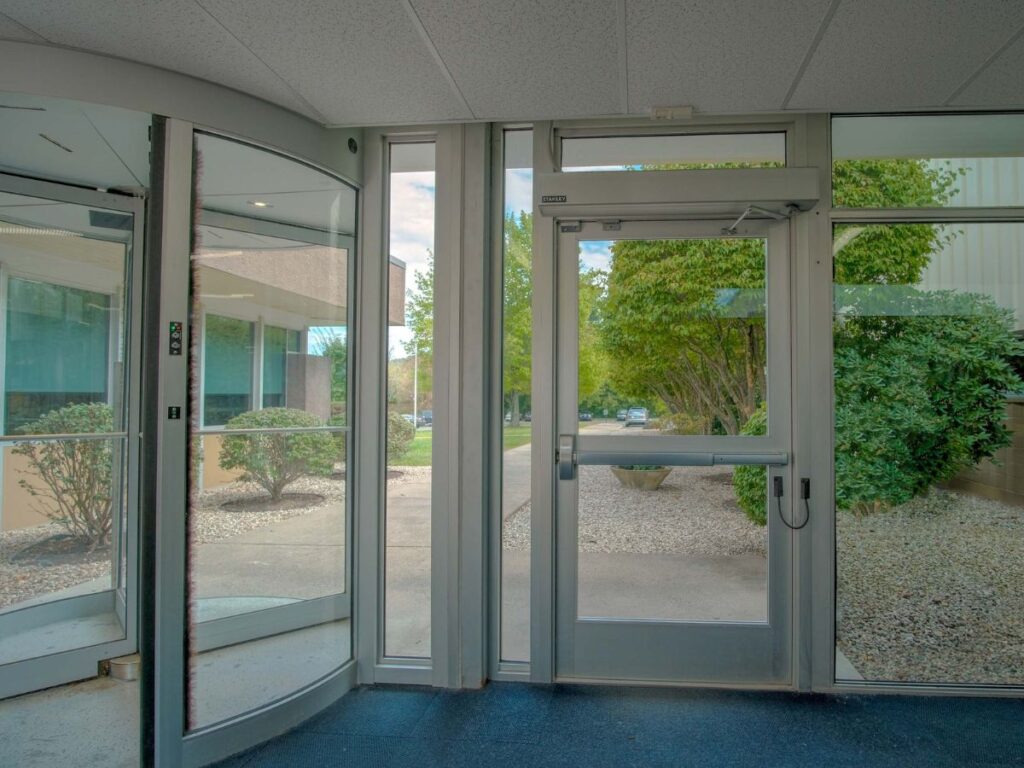
2. Hands-Free Operation (Push-to-Open)
One of the biggest advantages of swinging doors is their hands-free function. Instead of gripping a handle or twisting a knob, you simply push and walk through. I’ve seen this feature make a huge difference in busy hotels and inns where staff carry trays, carts, or luggage. It feels natural, and once you get used to it, you start to notice how awkward regular doors can be.
Hygienic in Public Environments
- Less Contact With Surfaces: Guests and staff avoid grabbing handles that others have touched. This lowers the risk of spreading germs, especially during flu season.
- Cleaner Guest Experience: Visitors notice when doors feel easier and cleaner to use. It adds to the impression that your property cares about hygiene.
- Reduced Cleaning Time: Fewer fingerprints and smudges on handles mean your cleaning staff spends less time wiping down high-touch areas.
I’ve had property managers tell me that this feature alone helped them improve their cleanliness scores with guests.
Ease of Use for All Ages
- Children: Young guests or family members can move freely without struggling to reach or pull a handle. It creates a safer and more welcoming environment.
- Older Adults: Seniors often deal with reduced grip strength or mobility issues. Push-to-open doors make their experience smoother and less tiring.
- Staff Carrying Loads: Workers moving carts or supplies benefit from the same feature. They stay focused on their job instead of juggling with doors.
Hands-free operation is more than just a convenience. It creates a cleaner, safer, and more user-friendly environment for everyone in your property. I’ve found that once a business makes this change, they rarely go back to traditional handles. It’s a small upgrade with a big impact on daily use.
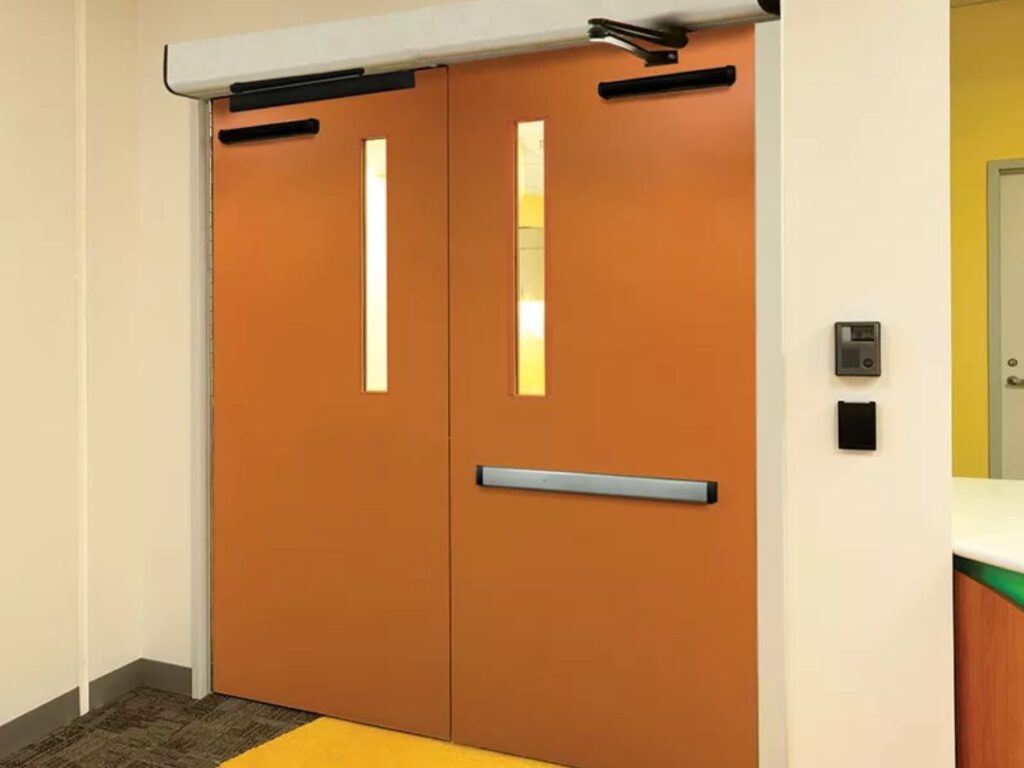
3. Improved Traffic Flow in Busy Areas
In busy properties, people are constantly on the move. Staff rush from kitchens to dining areas, guests come and go through lobbies, and greenhouse workers carry trays or tools between rows. Regular doors slow this movement, while swinging doors keep it steady. From experience, I can say that this small change often transforms the pace of daily operations.
Prevents Bottlenecks
- Faster Staff Movement: Teams carrying trays or carts move through without stopping to wait. Service stays on schedule.
- Less Guest Frustration: Visitors avoid getting stuck behind carts or cleaning equipment. The atmosphere feels more professional.
- Improved Workflow: In service areas or greenhouses, staff can pass each other without conflict. The result is steadier progress on tasks.
Many property managers I speak with mention how traffic jams around doorways dropped almost immediately after installing swinging doors.
Clear Pathways
- Two-Way Access: Staff moving in and out at the same time can pass smoothly. Space feels less restrictive.
- Safer Flow: With fewer stops, there’s less chance of accidents like dropped trays or spills.
- Guest Experience: Guests notice when spaces are easy to move through. That smoothness leaves a positive impression.
Better traffic flow is about more than convenience. It reduces stress on staff, creates a safer workspace, and shapes the overall guest experience. From what I’ve seen in properties of all sizes, when doors stop being barriers, the entire operation feels more efficient.
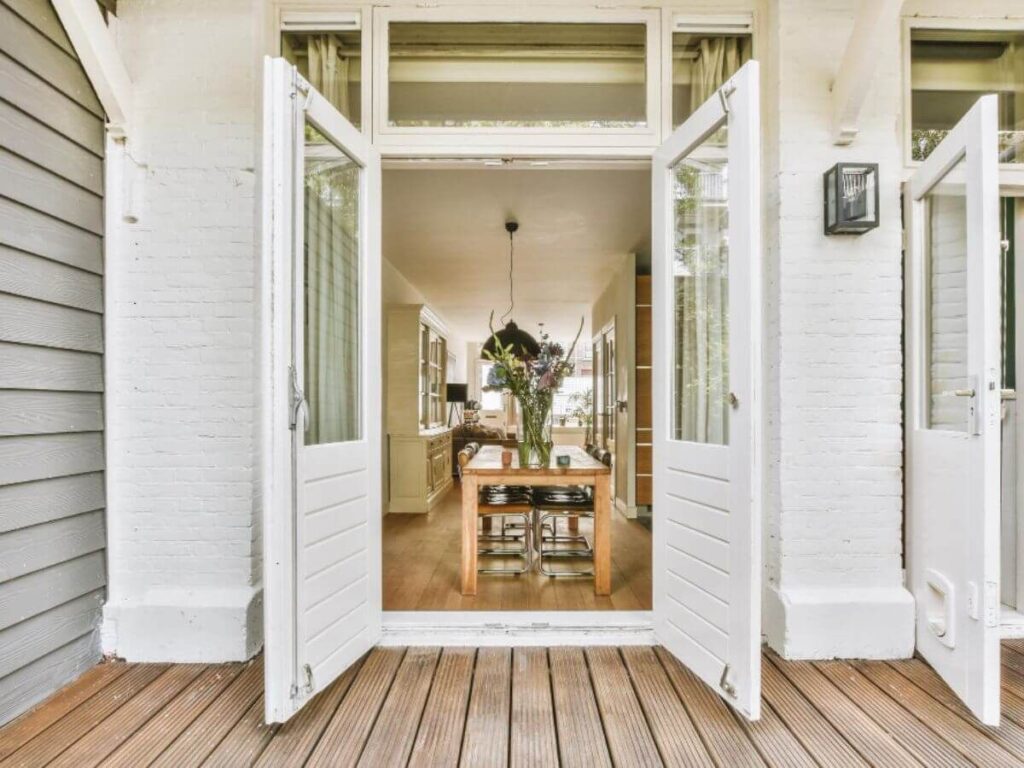
4. Durability in High-Use Environments
One of the strongest reasons businesses choose swinging doors is their durability. These doors are designed for frequent use, which makes them a dependable choice for commercial properties. In my work with different types of buildings, I’ve noticed that durability often decides whether a door becomes an asset or a recurring problem. A reliable door keeps operations running without constant repairs.
Built for Frequent Use
- Stronger Hardware: Commercial-grade hinges and frames are made to resist bending or loosening under pressure. They hold up well even in properties where doors are opened hundreds of times each day.
- Resistant Materials: Options like stainless steel, aluminum, or solid-core wood are less likely to warp or crack. These materials extend the lifespan of the door and reduce replacement needs.
- Fewer Repairs: Swinging doors have fewer moving parts compared to automatic systems. This makes them less prone to breakdowns and keeps maintenance costs predictable.
Suitable for Commercial and Residential Applications
- Hotels and Inns: Service areas often experience nonstop movement. Durable doors prevent interruptions caused by breakdowns and keep operations steady.
- Villas and Homes: Long-lasting doors reduce the cost of frequent replacements. They also hold their look and function over years of use.
- Greenhouses: These environments expose doors to humidity, dirt, and frequent handling. Durable materials help prevent sticking, swelling, or early wear.
Durability in doors is about more than saving on repairs. It creates stability in daily operations and gives you one less thing to worry about. From what I’ve seen, when properties invest in durable doors, the payoff comes in smoother workflows and lower long-term costs.
5. Simple Maintenance and Cleaning
One reason many property owners prefer swinging doors is that they are simple to care for. Unlike more complex systems, these doors are straightforward. In my work with hotels and greenhouses, I often hear that maintenance staff appreciate doors that do not demand constant attention. That practicality saves time and money in the long run.
Minimal Moving Parts
- Lower Risk of Malfunctions: Sliding doors rely on tracks that collect dirt and debris. This leads to sticking or jamming, while swinging doors keep working with basic hinge care.
- Reduced Repair Costs: Automatic doors use sensors and motors that wear down quickly. Swinging doors avoid those expensive parts, making upkeep more predictable.
- Quick Fixes by Staff: Most minor issues with hinges can be handled in-house. Your team can apply oil or tighten screws without waiting for a technician.
From my perspective, this is one of the main reasons swinging doors remain attractive for both small and large properties.
Easy to Clean Surfaces
- Hospitality Kitchens: Doors face grease and spills daily. Non-porous surfaces let staff clean quickly during shifts.
- B&B and Villas: Entry doors see fingerprints and smudges from frequent use. Simple surfaces cut down on scrubbing and polishing.
- Greenhouse Entryways: Doors collect dirt and moisture from constant handling. Easy-clean panels keep them hygienic with less effort.
Maintenance is often overlooked until it becomes a problem. Swinging doors reduce that burden by keeping upkeep simple and cleaning fast. From what I’ve seen, when a property chooses this style, staff spend less time fixing doors and more time focusing on their actual work.
6. Noise Control Between Rooms
Noise is one of those things people notice quickly. Whether it is a guest in a hotel or a family in a villa, unwanted sound can change how comfortable a space feels. Swinging doors provide a simple way to cut down on noise transfer.
Over the years, I have seen how this one feature improves both the guest experience and daily life at home.
Guest Comfort in Hotels and Inns
- Kitchens and Dining Areas: Doors reduce clanging sounds from dishes and equipment. Guests enjoy their meals in peace instead of hearing the kitchen at full volume.
- Service Corridors: Cleaning carts and staff conversations stay muffled behind closed doors. This allows hallways and rooms to feel calmer.
- Laundry Rooms: Machines can be loud. A swinging door keeps that noise from spilling into guest spaces.
Property managers I’ve spoken with often highlight this benefit as one of the most noticeable improvements after upgrades.
Residential Use
- Living and Work Spaces: Doors help separate busy kitchens or workshops from living areas. This makes homes feel more balanced and comfortable.
- Multi-Generational Homes: When several family members live together, doors reduce noise between shared and private rooms.
- Greenhouses and Utility Rooms: Equipment noise is contained so it does not disrupt other parts of the property.
Controlling noise creates a calmer environment for everyone. It improves guest satisfaction in hotels, supports relaxation at home, and allows work to continue without distraction. From my perspective, this benefit is often underestimated, but once in place, it makes a clear difference.
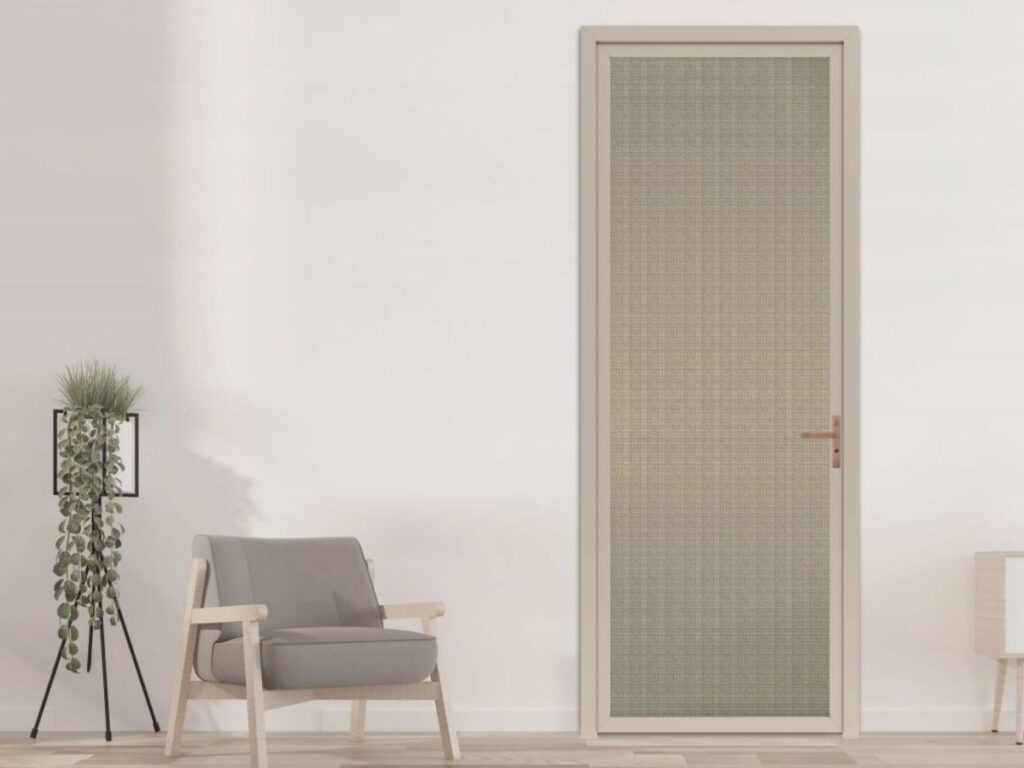
7. Better Temperature Control
Temperature control is critical in both commercial and residential spaces. Whether the goal is keeping guests comfortable in a hotel or maintaining stable conditions in a greenhouse, doors play a bigger role than most people realize. Swinging doors reduce air loss and keep heating or cooling where it belongs. This often leads to noticeable energy savings and smoother day-to-day operations.
Prevents Air Loss
- Energy Efficiency: Quick-closing doors keep HVAC systems from overworking. Lower energy use translates into reduced operating costs.
- Comfortable Environments: Guests and staff experience steadier temperatures in lobbies, dining areas, and hallways. A consistent climate makes spaces feel more inviting.
- Reduced Strain on Equipment: Heating and cooling systems last longer when they are not constantly compensating for air loss. This lowers the frequency of repairs.
Facility managers often report a clear improvement in temperature stability after upgrading to better-sealing swinging doors.
Greenhouse Applications
- Stable Humidity: Quick closure reduces the amount of moist air that escapes. This keeps plants in a healthier climate.
- Steady Warmth: Retains heat even during colder seasons when staff move frequently between zones. Energy costs remain more predictable.
- Efficient Workflow: Workers can carry trays or push carts without slowing down. The design maintains climate stability while supporting productivity.
Better temperature control supports comfort, lowers costs, and protects sensitive environments like greenhouses. Many owners and managers agree that once this improvement is in place, it becomes one of the most valued features of swinging doors.
8. ADA Accessibility Compliance
Accessibility is a detail that often gets overlooked until it becomes a problem. Yet, in modern properties, it is one of the most important parts of design. Guests, staff, and visitors all need to move through spaces comfortably, and swinging doors make that possible. Many of them already meet the standards set out by the Americans with Disabilities Act (ADA), which focuses on width, clearance, and ease of use.
Wheelchair-Friendly Options
- Proper Widths: Wider frames prevent narrow entryways from becoming barriers. Guests using mobility aids pass through with less stress.
- Ease of Use: Push-to-open access avoids the need to twist or pull handles. This helps people with limited grip strength or reduced mobility.
- Safer Access: Smooth swings and controlled closing reduce the chance of accidents. Doorways feel calmer and easier to manage for everyone.
Universal Design
- Hotels and Inns: Guests appreciate thoughtful layouts that remove barriers. This adds to their comfort and experience.
- Villas and Homes: Families with seniors or children notice how much smoother movement feels. The property becomes easier to live and work in.
- Shared Facilities: Lobbies, dining rooms, and service areas stay open to everyone. The space feels more welcoming and inclusive.
ADA compliance is not just about avoiding penalties. It reflects a property’s commitment to making spaces accessible and comfortable for everyone. From experience, owners who invest in accessibility often see it returned through guest loyalty, better reviews, and smoother daily operations.

9. Flexible Design Options
Every property has its own personality. The doors you choose should highlight that character instead of working against it. A luxury hotel, a quiet villa, and a busy greenhouse all have different needs, yet swinging doors can be adapted to fit them. The wide range of materials and styles makes it easier to strike the right balance between function and appearance.
Material Choices
The material of a door shapes both its durability and its look. Swinging doors come in several options that give you flexibility depending on where they are installed.
Some of the most common choices include:
- Wood: Adds warmth and a classic feel. Many villas and boutique properties prefer this because it blends with traditional interiors.
- Glass: Creates a modern, open appearance. Hotels often use it in lobbies or conference areas where light and visibility matter. Vallisco often recommends glass swinging doors for spaces that want both elegance and functionality, as they allow natural light to flow while maintaining smooth access.
- Aluminum: Lightweight yet durable. This option is practical for areas that need strength but not heavy construction.
- Steel: Strong and long-lasting. Ideal for service corridors or commercial zones where heavy use is part of daily operations.
Owners and project teams often find that the right material not only serves its purpose but also complements the design vision of the space.
Style and Aesthetic Matching
- Hotels: Sleek glass doors work well in modern settings. They help create an upscale atmosphere that matches guest expectations.
- Villas: Traditional wooden finishes feel inviting and timeless. They give a sense of warmth that residents and visitors appreciate.
- Greenhouses and Service Areas: Simple aluminum or steel doors focus on function. They stay professional while keeping attention to the work at hand.
Design flexibility makes it easier to create spaces that feel consistent and intentional. A property looks more polished when doors fit both the design and the function of the area. When form and purpose align, the result is a smoother experience for everyone who uses space.
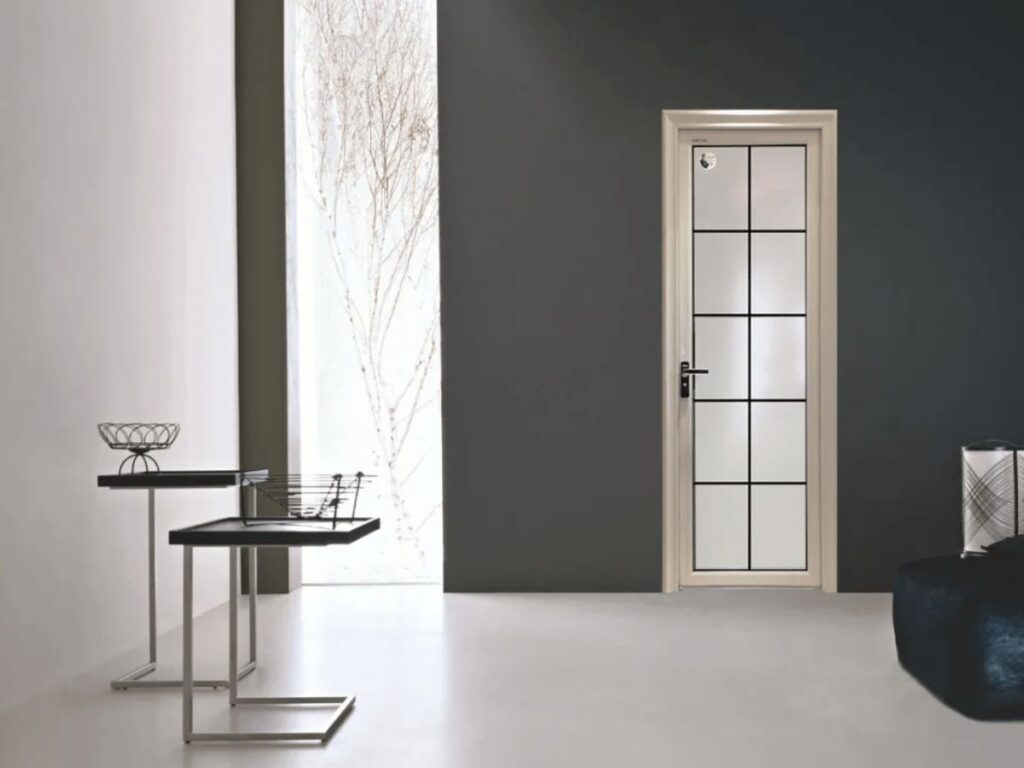
10. Privacy Between Public and Staff Areas
Guests often notice when operations spill into their space. A cart parked in the hallway or the sound of kitchen clatter can quickly break the atmosphere you want to create. That’s why separation between public and staff areas is so valuable. Swinging doors make this easy without adding complexity to the layout.
Hotel and Restaurant Use
- Kitchen Separation: Guests enjoy meals without hearing the nonstop activity behind the scenes. This keeps the dining area relaxed and inviting.
- Service Corridors: Supplies, carts, and staff movement stay out of sight. Hallways and lobbies look polished even when work is happening nearby.
- Professional Image: Clean divisions between work areas and guest spaces strengthen the impression of quality. Small details like this shape how people view a property.
It’s often the absence of noise and clutter that guests remember most.
Residential Use
- Staff Quarters: A defined separation makes everyone more at ease. It respects privacy without cutting off access.
- Service Rooms: Kitchens, laundry spaces, and storage areas stay tucked out of sight. The main living rooms feel more open and serene.
- Guest Experience: Visitors notice when everything feels organized. Even in a home, discreet boundaries create a smoother stay.
Privacy is part of comfort, whether you are running a hotel or managing a villa. Guests enjoy calm spaces, staff work without distraction, and owners get a property that feels well managed. Swinging doors make that balance simple to achieve.
11. Cost-Effective Compared to Automatic Doors
Automatic doors can look sleek, but the price that comes with them is hard to ignore. Swinging doors give you the same day-to-day function without the heavy cost. On many projects, this difference ends up being the main reason people stick with them. They save money upfront and continue to save it year after year.
Lower Purchase Cost
- Affordable Investment: Swinging doors typically cost a fraction of what automatic systems demand. That gap frees up money for other improvements.
- Simple Installation: Without the need for electronics, installation is faster and less disruptive. The savings show up right away.
- Easier Renovations: Adding or replacing swinging doors in existing openings is usually straightforward. Automatic systems often require structural changes that are added to the bill.
It’s often surprising how much more you can do across a property when sticking with swinging doors instead of upgrading to automatic ones.
Reduced Long-Term Maintenance
- Fewer Breakdowns: Hinges and panels are far less likely to fail than motors and sensors. Daily use rarely creates expensive problems.
- Lower Repair Bills: If something does need attention, fixes are usually simple. Repairs rarely require specialists or high replacement costs.
- Straightforward Upkeep: Regular hinge lubrication and occasional adjustments are enough to keep them working smoothly.
It is a relief for many teams to know that swinging doors do not add constant strain to maintenance schedules.
Cost always plays into these decisions. Swinging doors strike a balance: reliable performance without the burden of high expenses. Over time, the savings can be felt in both the budget and the ease of keeping things running
12. Easy Retrofit for Existing Openings
Many swinging doors are designed to work with standard door frames. This means you do not have to rebuild an entryway just to make the change. In practice, installation becomes quicker and less expensive.
Practical benefits include:
- Less Construction Work: Most retrofits do not require cutting into walls or modifying floor tracks. This shortens the renovation timeline.
- Lower Labor Costs: Standard hardware and hinges mean fewer specialized tools or contractors are needed. Costs stay manageable.
- Minimal Disruption: Since work is less invasive, normal operations can often continue while the upgrade is happening.
This feature is especially appreciated in properties where downtime comes with real consequences.
Ideal for Renovation
- Hotels: Service areas get quick updates without long closures. Guests notice the improvement without disruption.
- Villas: Replacing heavy or worn doors with swinging models makes spaces more comfortable. The transition is simple but noticeable.
- B&Bs: Small properties benefit from affordable upgrades that improve function without blowing the renovation budget.
Retrofitting doors should not feel overwhelming. Swinging doors let you make a meaningful upgrade with less cost, less time, and less hassle. For properties balancing daily operations with renovation goals, this simplicity makes a big difference.
Conclusion
You’ve seen how swinging doors offer more than just function. They improve flow, save energy, reduce noise, and keep costs down.
Every space is different, but the right door choice makes daily life smoother.
So why wait until the next project to think about it? Start now, and make an upgrade that pays back every day.
Which benefit stood out to you most? Could swinging doors be the answer your property has been looking for?
Contact Vallisco today and let’s talk about how they can work for you.
Explore Related Resources
Want to see more? We’ve gathered additional product choices to give you even more variety:
Still haven’t found what you’re looking for? Don’t hesitate to contact us. We’re available around the clock to assist you.



